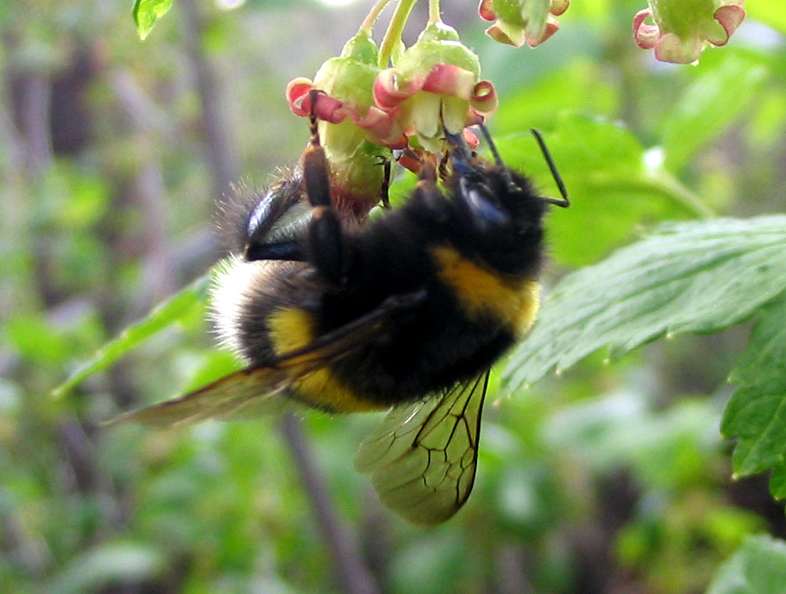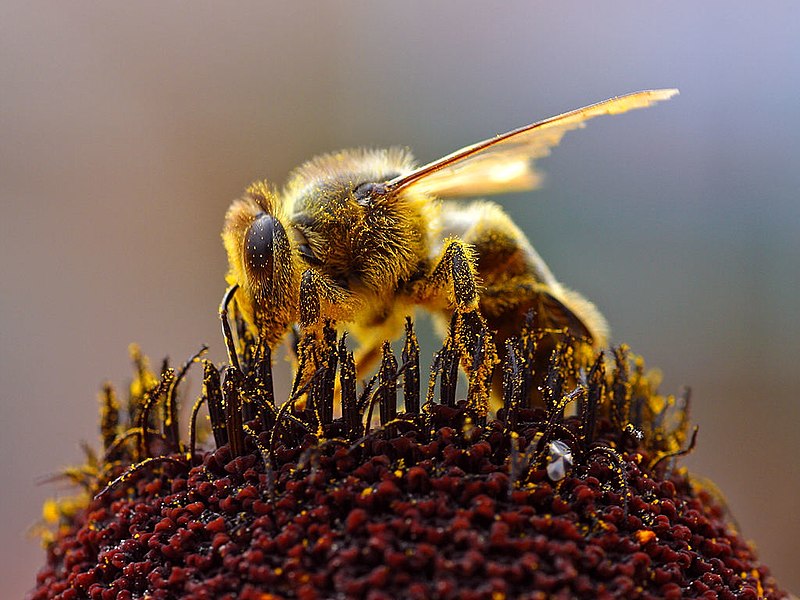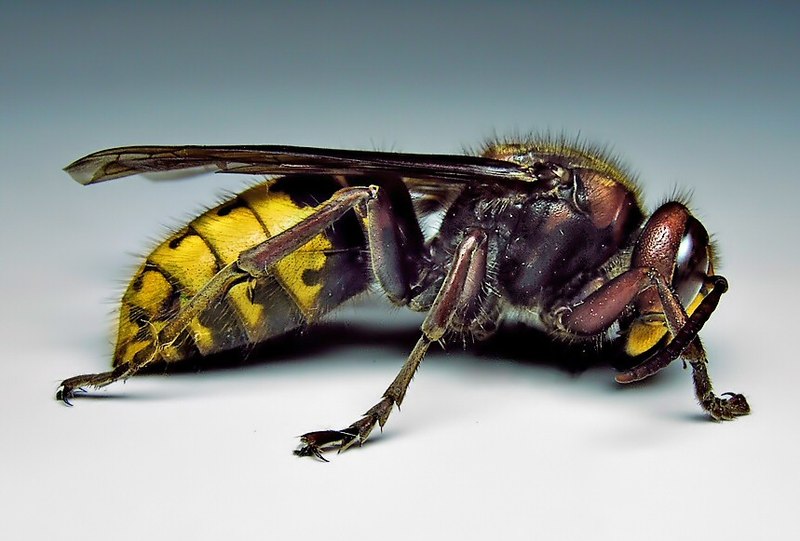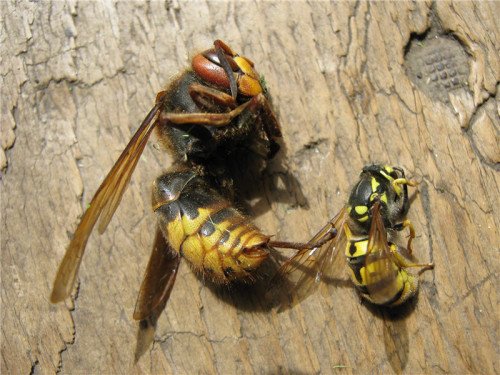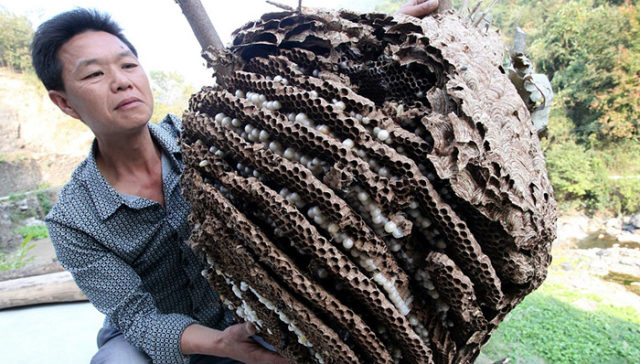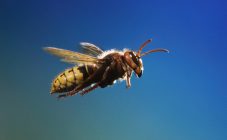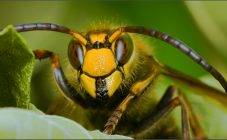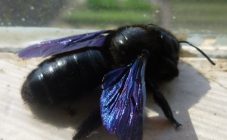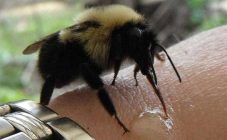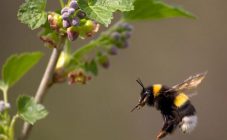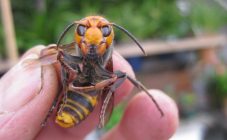Content:
It is difficult to imagine nature without insects that crawl, fly, and buzz. They are attracted by the aroma of flowers, the sweet smell of fruits and berries. Many people have experienced pain from the bite of a buzzing insect. How dangerous are they for people and how to distinguish them by their appearance, what can be the consequences of the poison that has entered the victim's body?
Wasp, bee, bumblebee, hornet - differences
Representatives of the insect family have both similarities and significant differences. All of them fly, buzz and pose a threat in the form of a bite with the release of a toxic substance. You need to understand that insects attack in case of threat to life and in other cases are not dangerous.
The bees are quite calm, hardworking, busy all day collecting nectar and pollen. In the hive there is a round-the-clock work on the construction of honeycombs, feeding the young generation, ventilation, processing and storage of the collected product. The life span of a worker bee is short, about a month, but with the rapid development of the young generation, it is imperceptible to those around it.
What is the difference between a bumblebee and a bee
Regardless of the similarities between bees and bumblebees in wing structure, there are many factors that differentiate them. The bumblebee and the bee are close relatives. Their habitat is very extensive. There are about 300 species of bumblebees found throughout the continents. A distinctive feature of this species is the shiny covering of the female's hind legs from fold to edge, covered with long hairs that form a basket for collecting pollen. The abdomen is round, not bent, the segments are rigid, the organs of the reproductive system are dark in color. The internal structure of the tip is tubular. The poison passes through this channel after the sting penetrates under the skin, the upper structure of which is without notches, due to which the injections are made repeatedly, without harm to the insect itself.
The family of bees has more than 20 thousand species, many of which have not been studied. They are the main pollinators and collectors of pollen, honey producers. There are three pairs of legs on the abdomen, on the inside with villi. On the hind legs, the villi form baskets for collecting pollen. The abdomen consists of dense segments, bent downward. The sting is empty inside, the top cover of the sting is notched, which, when bitten, are caught by barbs over the edges of the puncture. After the separation of the sting with a piece of the abdomen, the insect soon dies.
The difference between a bee and a bumblebee can be determined visually:
- A bumblebee is twice as large as a bee, its body is rounded.
- By coloring, a bumblebee is brighter than a bee.
- Bees are used on farms to collect pollen and pollinate plants in gardens and fields in open areas, bumblebees are used to pollinate plants in greenhouses.
- Sting application - The bumblebee uses its prick many times. The bee dies only once.
Hornet and wasp - differences
How is a hornet different from a wasp? The hornet is the largest representative of the wasp family. Its body length is more than five centimeters. The difference between a hornet and a wasp includes not only size, but also body structure. The head is large, wide at the back of the eyes, the chest area is large, wide, dark in color. The belly has the same structure as that of a wasp, but much larger.
The difference between a hornet and a wasp lies in the use of material to build a nest:
- The wasp uses thin fibers of trees for construction, moistens the secretions that make up saliva, chewing them to the desired state with saliva, and uses them to build combs. The nest looks like a round roll of paper with numerous parallel layers, the honeycomb of which is on the lower side of the layer.
- The hornet uses the same construction method, but uses material for use from rotted fibers of trees and stumps. This material gives the nest a dark, brown tone when used.
The hornet settles throughout the territory of the countries, except for the far north, in many areas it is considered an endangered species. The wasp also lives throughout the territory, except in the northern regions, but is considered a useless, stinging insect.
Wasps are distant relatives of bees and ants. They do not take care of the offspring, once they put an egg in a cell, seal it and throw it away.
Nests are built in any suitable places for this:
- between branches;
- in burrows underground;
- in buildings, in the form of a round roll of paper.
The hornet sting reaches up to 5 mm in length. It attacks a person only in case of danger to his life, applying a bite with his jaws, after which he can sting.
The diet of both wasps and hornets includes:
- nectar;
- fruit juice, pollen;
- tree sap;
- insects - caterpillars and spiders.
How bees differ from wasps and bumblebees
The bumblebee and the wasp have a significant difference in color, in the wasp it is defiant, bright yellow. The bumblebee is large, the body is rounded, fluffy, darker than the wasp in color. Bees and bumblebees feed on pollen and nectar, sucking it in with their proboscis. Wasps are omnivorous insects - they consume pollen, nectar, fruit juice, tree sap, small insects, attack bee hives, using sharp jaws, which are used when biting.
How to distinguish a hornet from a wasp uterus
The main visual difference is in size.
Insects of the family aspen have a thin waist, and a long abdomen. The hornet has a waist not as thin as in a wasp, the size of the head and thoracic region and abdomen is much larger than that of a wasp and even a wasp uterus, which is the largest in an aspen swarm. The wasp's colored stripes are bright yellow, alternating, with clearly defined edges along the junction line.
Who is stronger: wasp or bumblebee
Insects differ in the nature of their behavior - the bumblebee is a calm insect and uses its weapon in extreme cases, the wasp is very aggressive and attacks an enemy larger than it. Wasps often plunder bumblebee nests, eating their reserves, using a sting and biting jaws when attacking. A healthy family of bumblebees easily copes with robbers, but if the family is weak, then the hornet swarm wins, which can kill not only the working bumblebees, but also the entire young generation of the bumblebee family.
Where wasps and hornets winter
Over the summer, wasps accumulate a large amount of nutrients and hibernate in winter, using the reserves of their body. Solitary individuals can winter under the bark of a tree, in tree hollows, in old destroyed stumps, in the crevices of outbuildings. Over the summer, the swarm can build a huge "paper" nest, but with the onset of autumn, the young generation should seek refuge for the winter and not return to the old nest.
Hornets build a nest during warm days, raise young recruits and accumulate nutrients for wintering. In early autumn, young females fly out of the nest to look for a partner. After fertilization, they settle in the cracks for wintering.With the onset of cold weather, working hornets close the exits from the nest and can feed on stocks and eggs that are laid throughout the season.
In severe frosts, the working hornets die, only the queen remains in the nest, which in the spring will lay new eggs and create a new swarm. Wintering is a suspended sleep until early spring. With the first positive heat readings, the female wakes up and looks for a place to build a nest, where she will lay eggs and breed a new hornet colony. Insects are considered an endangered species and are listed in the Red Book.
Than the wasp, bee and hornet sting
Wasp is a very aggressive insect; when attacking, a sting and jaw are used. Only females have a sting, this is an altered ovipositor, and everyone has a biting jaw. She bites more often, but she can use the sting up to five times in a row. The number of injections and poison depends on the age of the insect, the older, the stronger.
The bee is not so aggressive in nature and attacks only if its life is threatened. She pierces the victim's skin with a modified ovipositor. The sting, having notches, engages in the puncture and breaks off along with a piece of the bee's belly. After that, the bee dies.
The hornet is as aggressive as a wasp and can attack a person who has disturbed its habitat. The hornet both bites and stings. The sting is sharp and strong, it can sting several times. Hornet venom is considered less toxic than bee venom. Based on the size of the insect and the amount of poison that enters the victim's body through the sting, it poses a danger to human life.
Knowing the difference between stinging insects, you can avoid the risks of meeting them. These insects not only sting, but also bring great benefits, having learned about which, it is worth treating them kindly.
The main advantage of the bee is its usefulness in the economy. These are the main producers of honey, wax, propolis, bee bread, pollinators of flowering plants. Wasps and bumblebees are also beneficial: bumblebees are used to pollinate greenhouse plants, wasps destroy many aphids and caterpillars during the season. Useless and hornet's nest. Pressed into a jar and filled with alcohol for 10 days, the nest of wasps is used in the form of rubbing for the treatment of inflammatory processes in the joints, for colds, and a dry rubbed nest for sprinkling ulcers, burns, for rinsing with periodontal disease, in the form of a powder for sweating feet.
